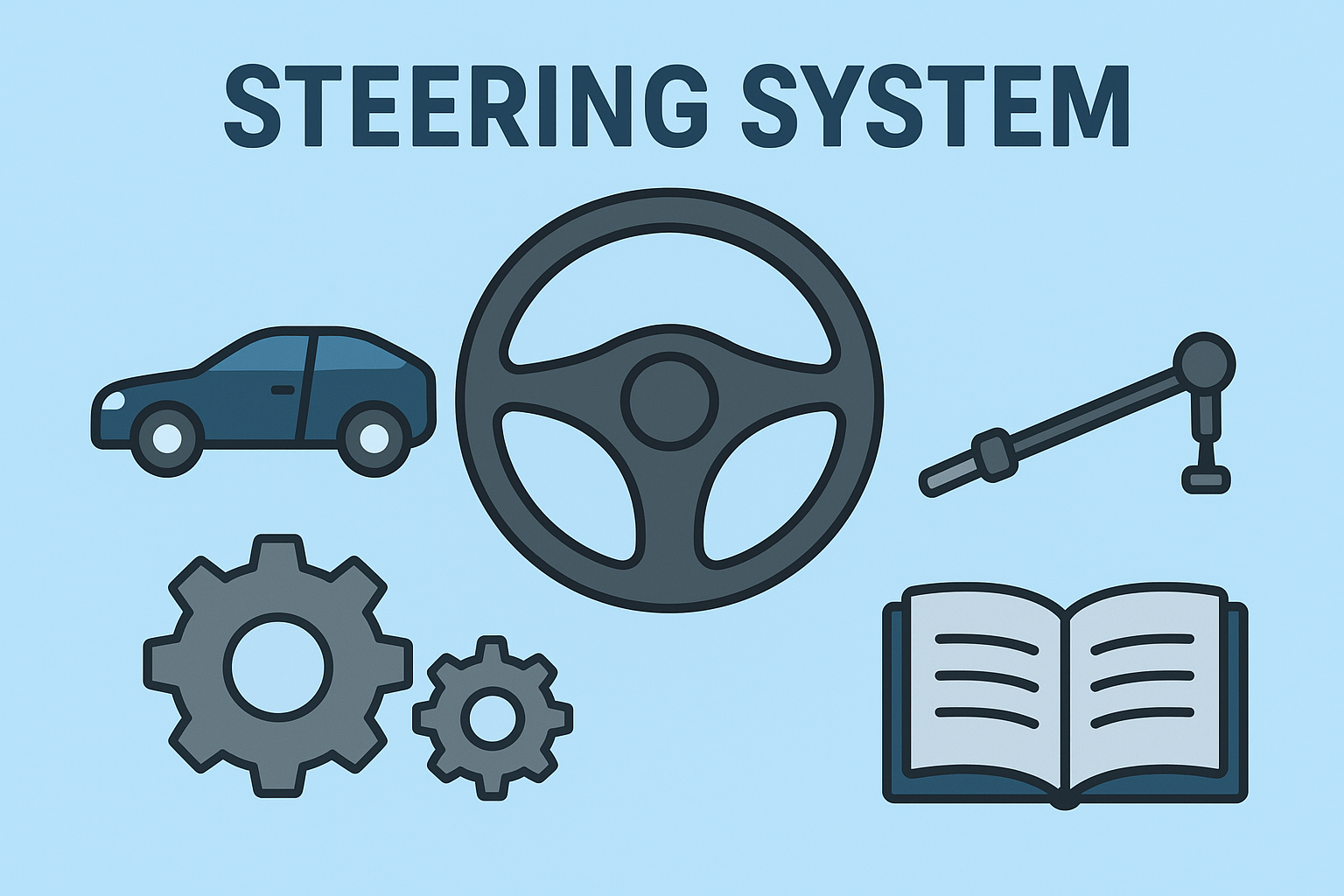
Course Name: Steering System
TRAINER: PAUL ACHOLA
Duration: 6 Weeks
Level: Diploma
Course Overview:
This course explores the fundamentals and advanced concepts of automotive steering systems. You'll learn how steering systems function, their components, and how they're evolving with technologies like electric power steering and steer-by-wire. Practical diagnostics and maintenance procedures are also covered.
Course Objectives:
By the end of this course, learners will be able to:
- Describe the purpose and types of steering systems.
- Identify and explain the function of key components.
- Understand steering geometry and its effect on handling.
- Perform basic diagnostics and maintenance.
- Explore modern steering technologies used in intelligent vehicles.
Course Structure
Topic 1: Introduction to Steering Systems
- Content:
- What is a steering system?
- Purpose and importance in vehicle dynamics
- Resources:
- Lecture Slides (PDF)
- Introductory Video
- Activity: Forum: “Why Steering Matters”
- Assessment: Quiz 1 – Basics of Steering
Topic 2: Types of Steering Systems
- Content:
- Manual vs Power Steering
- Rack and Pinion vs Recirculating Ball
- Resources:
- Interactive Diagrams
- Comparison Table (Downloadable)
- Activity: Drag-and-Drop Labeling Activity
- Assessment: Quiz 2 – Types & Configurations
Topic 3: Steering Geometry
- Content:
- Caster, Camber, Toe
- Ackermann Principle
- Resources:
- Animated Geometry Simulation
- Reading: Steering Geometry Explained
- Activity: Virtual Lab – Set Steering Angles
- Assessment: Assignment: Effects of Poor Alignment
Topic 4: Power Steering Systems
- Content:
- Hydraulic vs Electric Power Steering (HPS vs EPS)
- Components and Operation
- Resources:
- Video: How Power Steering Works
- Comparison Chart
- Activity: Group Discussion – "EPS in Modern Cars"
- Assessment: Quiz 3 – Power Steering
Topic 5: Advanced & Electronic Steering Systems
- Content:
- Steer-by-Wire
- Autonomous Vehicle Steering Systems
- Resources:
- Case Study: Tesla/Yamaha SBW Systems
- Infographic – Steering System Evolution
- Activity: Research Task – Latest Trends
- Assessment: Group Presentation: Future of Steering
Topic 6: Maintenance & Troubleshooting
- Content:
- Diagnosing Steering Problems
- Common Wear and Failures
- Resources:
- Workshop Manual Excerpts
- Diagnostic Flowcharts
- Activity: Virtual Troubleshooting Exercise
- Assessment: Final Quiz + Maintenance Checklist Assignment
Assessments Summary:
- Quizzes (4 total) – 40%
- Assignments & Activities – 30%
- Final Group Project – 20%
- Participation (Forums/Discussions) – 10%
Course Completion Requirements:
- Complete all quizzes with at least 60% score
- Submit all assignments
- Participate in at least 2 discussion forums
- Present final group project
Additional Notes:
- Access lab resources and simulators via the Resources tab.
- Office hours: Every Wednesday 3-5 PM (Zoom link in Announcements).
- For help, post in the “Ask the Instructor” forum.
- Teacher: Admin User